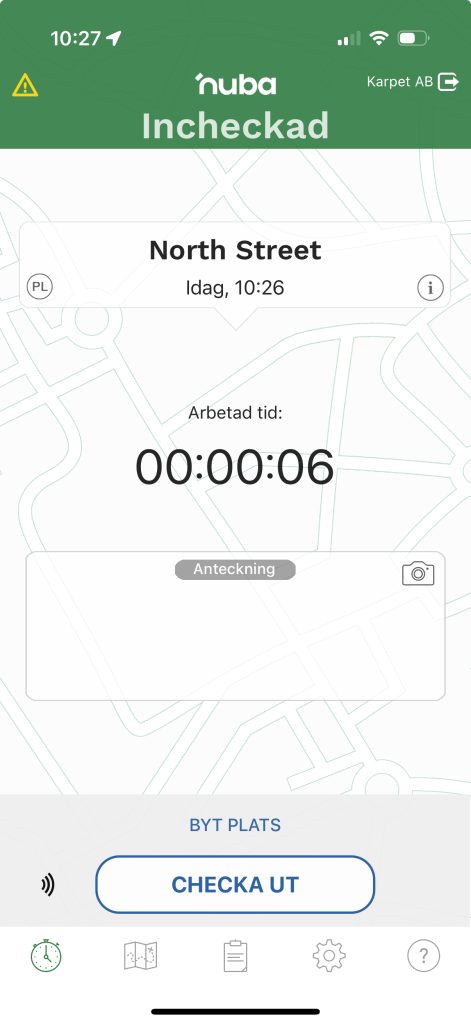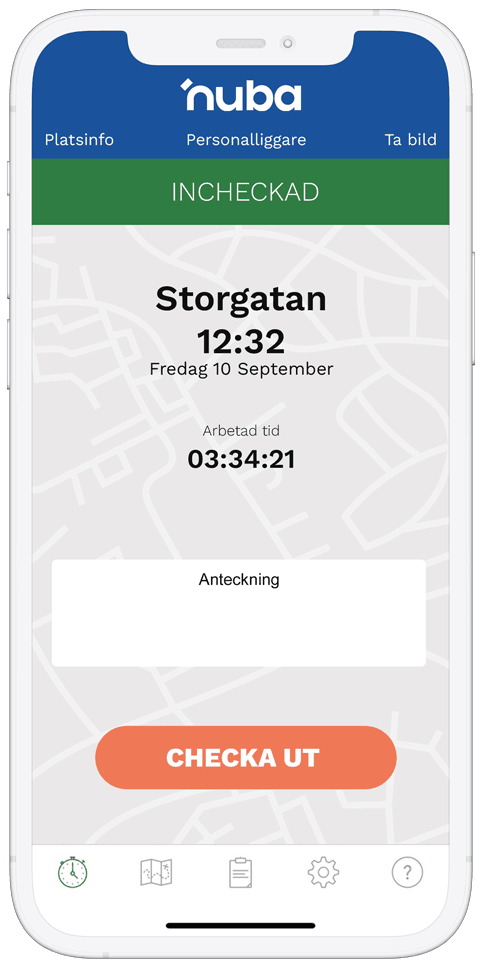A time clock is an effective tool for recording work hours, but in today’s digital world, there are more modern and convenient solutions than traditional mechanical or stationary digital clocks. A time clock as a mobile app offers the same functionality but with several advantages that make it the ultimate choice for both companies and employees. In this article, we explain how a time clock works and why a mobile app is the best solution.
What is a punch clock?
A time clock is a system used to record when employees start and finish their work. Traditionally, this has been done with mechanical clocks and paper cards, but today there are more advanced digital solutions – and the most flexible and user-friendly variant is a time clock as a mobile app.
How does a time clock work as a mobile app?
1. Download and installation: The app is downloaded to the employee’s smartphone, either via the App Store or Google Play. Installation is quick and easy.
2. Login: The employee logs in with a unique username and password, or via biometric login such as fingerprint or facial recognition.
3. Clocking in/out: When the employee starts or ends their work, they open the app and press a button to record the time. Some apps use GPS to ensure that the clocking occurs at the right location.
4. Automatic registration: All data is automatically saved in the cloud, making it easy for both the employee and employer to see hours worked, overtime, and more.
Advantages of a time clock as a mobile app
1. Flexibility and accessibility
With a mobile app, employees can record their working hours wherever they are. This is particularly beneficial for companies with remote work, field work, or employees who travel frequently.
2. No extra hardware costs
Since the app uses the employee’s own smartphone, the company doesn’t need to invest in expensive hardware units like traditional time clocks.
3. GPS function for location-based clocking
Many apps have GPS features that ensure clocking occurs at the correct workplace. This reduces the risk of cheating and gives the employer greater control.
4. Automatic data storage and reporting
All data is automatically saved in the cloud, making it easy to generate reports, calculate hours worked, and integrate with payroll systems. It saves time and reduces administrative work.
5. User-friendliness
Mobile apps are designed to be simple and intuitive to use. This makes it easy for all employees, regardless of technical knowledge, to use the system without problems.
6. Push notifications and reminders
The app can send reminders to employees if they forget to clock in or out, reducing the risk of incorrect time reporting.
7. Integration with other systems
Many mobile apps for time clocks can be integrated with existing HR and payroll systems, further streamlining the process.
Why choose a mobile app over a traditional time clock?
While traditional time clocks have been around for decades, they are often limited to a specific location and require physical presence. A mobile app takes time management to the next level by offering flexibility, automated data storage, and advanced features such as GPS tracking. For companies looking to modernize their time management while lowering costs, a time clock as a mobile app is the obvious choice.




